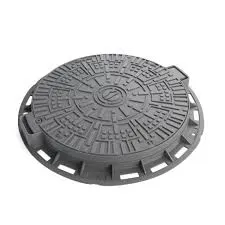bike rack cost
The Cost of Bike Racks A Comprehensive Overview
As cities worldwide increasingly adopt bicycle-friendly policies, the demand for bike racks has surged. These essential fixtures not only provide a convenient way for cyclists to secure their bikes but also promote a healthier, more eco-friendly mode of transportation. However, as municipalities and businesses consider incorporating bike racks into their infrastructure, understanding the costs involved becomes critical. This article will explore the various factors influencing bike rack costs, types of bike racks available, and considerations for budgeting.
Factors Influencing Bike Rack Costs
1. Material The material of a bike rack significantly impacts its cost. Common materials include metal (steel or aluminum), wood, and plastic. Steel racks generally offer the best durability and weather resistance, though they may come with a higher price tag. Aluminum racks, while lighter and resistant to rust, can also be costly. Cheaper options, such as plastic, may save money initially but could lack longevity and durability.
2. Design Bike rack design plays a crucial role in determining its price. Simple, straight-frame designs tend to be less expensive, while more intricate designs—such as inverted U-shapes, wave patterns, or custom designs—can increase costs. The complexity of the design not only influences material usage but also the labor involved in manufacturing and installation.
3. Capacity The size of the bike rack, or the number of bikes it can accommodate, also affects the price. Smaller racks for three to five bikes will naturally be cheaper than larger racks that can hold ten or more bikes. Moreover, space constraints and specific installation requirements can add to the overall cost.
4. Installation The installation process can significantly impact the total cost. Some bike racks are easy to install and can be done by staff or volunteers, which saves money. However, more complex installations might require professional help. Additionally, factors such as the type of surface (concrete, asphalt, grass) and any necessary groundwork can increase labor costs.
5. Location The geographic area and the specific location where the bike rack will be installed can also affect costs. Urban areas often have higher prices due to demand and increased labor costs, while rural locations might offer more competitive pricing. Furthermore, installing racks in highly visible and accessible areas may require additional safety features, such as reinforced materials, which can impact the overall budget.
6. Weather Resistance For places that experience extreme weather conditions (rain, snow, heat), investing in weather-resistant bike racks is essential. Racks with coatings to prevent rust or UV protection to prevent fading tend to be more expensive but can save money in the long run by reducing maintenance and replacement costs.
bike rack cost

Types of Bike Racks
Understanding the variety of bike racks available can also help in budget planning. Here are some common types
- Inverted U-Racks These racks are popular for their balance of cost and functionality. They typically range from $100 to $300, depending on the material and size.
- Wave Racks Curved bikes racks provide space for more bikes and are typically priced between $150 to $400.
- Custom Racks For businesses or organizations wanting a unique look, custom bike racks can be designed but often come at a premium, ranging from $400 to over $1,000.
- Portable Racks Ideal for events or temporary installations, these can range from $50 to several hundred dollars, depending on capacity and quality.
Conclusion
In conclusion, when considering the cost of bike racks, it’s important to account for multiple factors, including material, design, capacity, installation, location, and weather resistance. Evaluating these aspects not only aids in creating a realistic budget but also helps ensure that the bike racks meet the specific needs of the community or organization. Investing in the right bike racks can contribute significantly to promoting cycling as a viable transportation option, ultimately fostering a healthier and more sustainable environment. Whether for a city park, university, or business, thoughtful investment in bike racks can yield long-term benefits that justify the initial costs.
-
Square Sewer Cover Enhances Urban SafetyNewsAug.01,2025
-
Pipe Fitting Requires Precise AlignmentNewsAug.01,2025
-
Manhole Step Is DurableNewsAug.01,2025
-
Manhole Cover Is Found WorldwideNewsAug.01,2025
-
Hole Cover Frame On RoadsNewsAug.01,2025
-
Gully Grate Improves Road SafetyNewsAug.01,2025
-
Man Hole Cover Round Load CapacityNewsJul.31,2025
